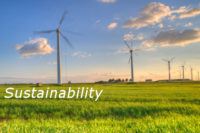Stakeholders such as customers, government and non-government agencies, academia, and investors want to know if a company is performing in a sustainable manner. In addition to sustainability staff members, senior leaders and employees who interact regularly with stakeholder groups should be able to answer some of their most commonly asked questions pertaining to a company’s social progress (e.g., labor practices, employee health and safety, community support), environmental protection and resource conservation efforts (e.g., water use, waste management and recycling, greenhouse gas emissions), and economic growth (e.g., supply chain engagement, direct and indirect economic value generated).
I took a few minutes to review some of the surveys, questionnaires, and other stakeholder inquiries Tyson Foods has responded to over the last three to five years. Below is a listing of some of the questions and discussion points we were asked to respond to most often.
- Does your company have a formal sustainability program? Simply stating “yes” won’t be enough. If asked this question, you should be prepared to explain how your company defines and views sustainability, and how this definition and vision aligns and integrates sustainability into all facets of your business.
- What role does sustainability play in your company’s overall strategic plan? When asked this question, it’s important that a company be able to explain how its sustainability activities align to its core business and strategic plan. Sustainability efforts must connect to a company’s culture, mission, and strategic direction. If a company isn’t able to explain this connection, it’s possible that its sustainability efforts could be perceived as a “nice to have” or an after-thought instead of part of an overall strategic plan.
- What are the main social, environmental, and economic challenges and opportunities in your company? Companies must be able to clearly articulate the challenges and opportunities they believe are most material to their business, and provide details on what they are doing to effectively manage these issues. Often these challenges and opportunities are defined as those with the potential to positively and negatively influence, both now and in the future, a company’s finances or operations; the safety and quality of its products; the progress and growth of global society; and the protection of the environment and conservation of natural resources. Additionally, consideration should be given to those issues that are of concern to stakeholders.
- What are the objectives and targets of your sustainability efforts, and what progress has been made in meeting your goals? In the world of sustainability, the old saying “what gets measured, gets managed” is key. Sustainability goals are the building blocks for achieving a vision, and companies should be able to explain how their sustainability goals will enhance all aspects of their social, environmental, and economic performance. Additionally, companies should be prepared to explain the progress they are making in meeting their goals. If a company is struggling with a particular goal, it should be transparent about the challenge and able to explain what adjustments are being made in order to meet its goal.
- What business value have you seen from your sustainability efforts? Most companies have standard calculations for determining the monetary business value of a new production plant, a modified production process, or the development and release of a new product. A calculation that accurately identifies the business return on an investment in employee happiness, reduced turnover, community support, workplace safety, animal welfare, sustainability reporting, stakeholder trust, or brand loyalty with consumers is not a simple matter. Therefore, companies must find creative and compelling methods for sharing both the monetary and “soft” business value they realize from their sustainability efforts.
Whether you are participating in a customer meeting, a roundtable discussion with a non-government organization, or engaging in technical sessions with academia and industry associations, it is imperative you are able to explain the foundation and progress of your sustainability efforts consistently and effectively. Consider reviewing your stakeholder inquiries to identify the questions you are asked most often. Once identified, work with your sustainability team, senior leaders, investor relations team, and other key individuals to develop standardized responses to these questions. This will not only ensure you respond to these questions in a timely manner but also that your responses are consistent and in alignment with your company’s overarching sustainability program.
OTHER QUESTIONS YOU MAY BE ASKED INCLUDE:
- How “green” are your products and what is your carbon footprint?
- Do you use alternative energy sources such as wind and solar?
- How are you engaging your employees in your sustainability efforts?
- What percent of your capital expenditures are related to sustainability?
- With which groups are you partnering regarding key sustainability initiatives?
- How do you engage your supply chain in your sustainability efforts?
- What percentage of your packaging materials is made from recyclable materials and is recyclable?
- Are your products “certified” sustainable by an internationally recognized organization?
- Where do you stand on sustainability relative to your competitors?







Report Abusive Comment